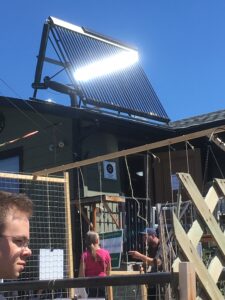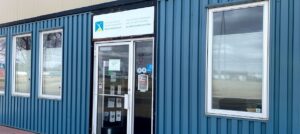By: Cameron Domes
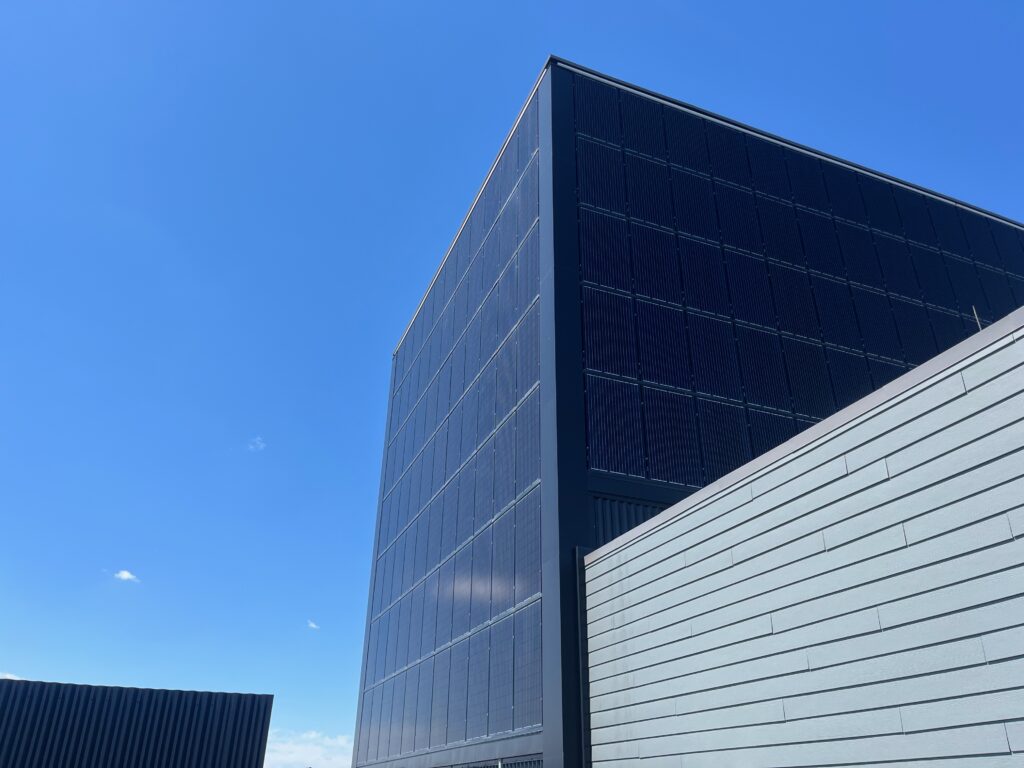
The Building
During the Camrose Solar Home Tour, we were given the opportunity to tour the Jeanne and Peter Lougheed Performing Arts Centre, guided by Sean, their technical director. Built in 2014, the PAC is celebrating its 10-year anniversary this November. The Centre is a public partnership between the City of Camrose and the University of Alberta. Each supports part of its operation with contributions like permits and maintenance.
The Outside
Boasting 488 solar modules, the PAC’s fly tower is one of the biggest building-integrated photovoltaics in Canada, second only to the Edmonton Convention Centre. On the adjacent roof over the amphitheatre, there are 120 additional non-integrated modules. Together, the tower and roof are able to produce 121kWh and 36kWh of power, respectively, for a total of 157kWh. The entire system can produce 84 Mega Watts annually, which is equivalent to 12 Alberta homes!
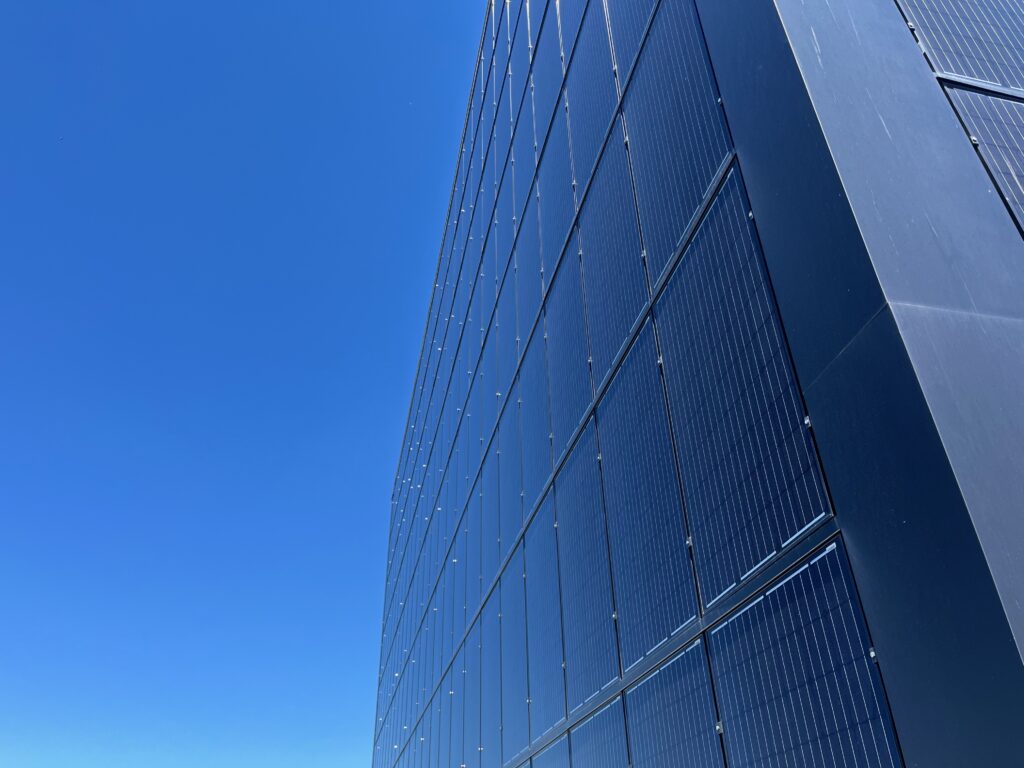
Since most of the shows are on after dark, the PAC uses little of the energy it produces when it produces it. Separated from the rest of campus, it instead sells its power to the grid during the day and buys it back for shows at night. This lets them offset around 80% of their electricity bill. Initially, the array was expected to have a payback period of 25 years. Recently, it has been reviewed and revised to a total of 15 years. That’s just five to go, and it will continue producing for decades more.
In order to be considered a “building-integrated” project, the solar arrays need to be a part of the structure itself, not just added on top of what’s there. In the case of the PAC, the modules act as the cladding of the building. You might be thinking, “Why put modules on the north side? There’s no sun.” The reason behind it is twofold. First, it does get some sun. While the production is only around a third of the south face, most walls don’t produce anything at all. Second, aesthetics are essential. Simply put, the building looks nicer with all four sides covered equally and looking the same. Better than covering one side with corrugated steel.
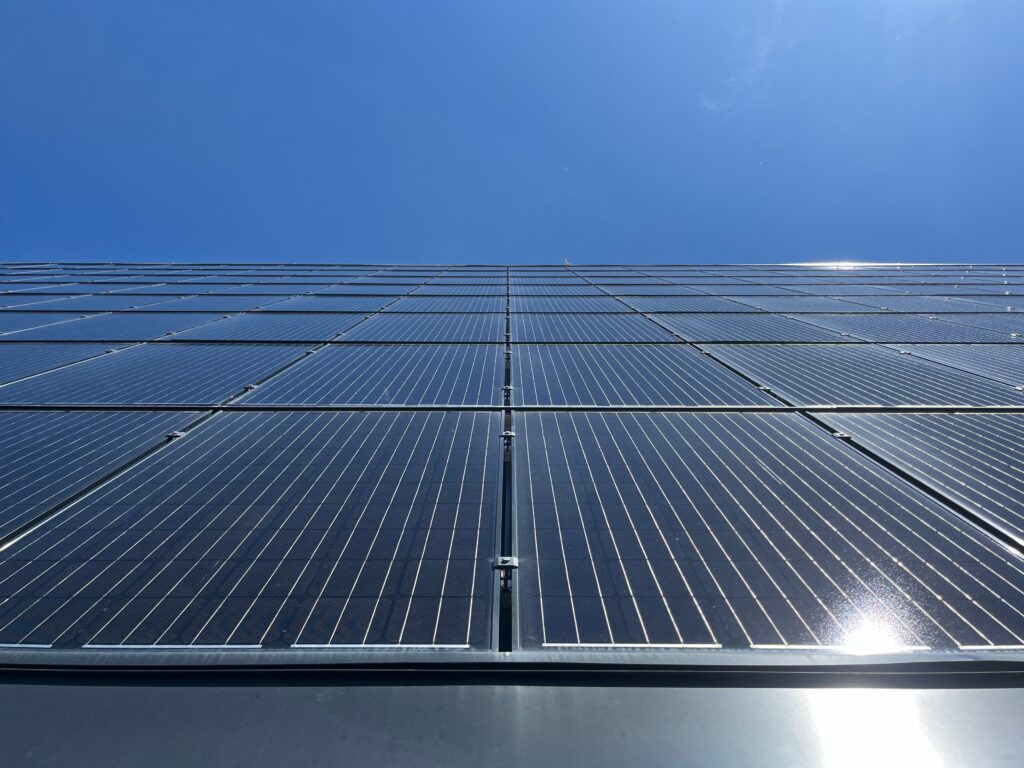
There were concerns during planning that the west face of the building would reflect too much sun onto the road, blinding drivers. However, unlike other materials used in high-rise buildings, solar modules are designed to absorb light, not reflect it. The cells need to absorb light to create electricity, so they are covered in a non-reflective coating. The reflected light is wasted energy.
The Inside
Not only is the exterior technologically incredible, but the interior is amazing, too. In the fly tower is the rigging to raise and lower things on the stage like curtains, sets, and other props. Unlike traditional systems, the rigging at the PAC is fully automated. Seating nearly 600 people, it was the first theatre in North America to use a full suite of LEDs for their lighting, both on the stage and throughout the building. Using multi-colour LEDs in the fixtures for the stage lights has considerably changed how coloured light is created.
Previously, theatres would use gels, see-through pieces of coloured plastic, to change the colour of the light. The powerful incandescent bulbs in old stage lights would output so much heat they could damage the gels after just a few uses. Theatres might have an annual gel budget in the thousands, but the cost is almost nothing with LEDs. The gels go from lasting hours or days to years. With the multi-coloured LEDs, gels are still used to soften the light by blurring it instead of changing the colour. Newer systems even have a function that allows the light to dim into that warm amber colour that incandescents do. Each light is able to produce a full spectrum of colours so the whole system only needs around one-third of the number of fixtures, this means it only uses 10% of the electricity of other systems.
Multi-colour LEDs are widely available now, but at the time of the PAC’s construction, they were only a few years old and were just starting to be used in theatre lighting. When the lighting system was first installed, the PAC was the first theatre to get the fixtures it uses today, and it acted as a test run for the manufacturer. They even changed some of the fixture’s specifications, like how many could be chained together on the same outlet. Once again, staying ahead of the technology curve the PAC was one of the first theatres to start live-streaming its performances during the pandemic in the summer of 2020.
A Very Green Building
The many efficiencies in the operation and construction of the theatre have earned the JPL Performing Arts Centre four out of four green globes from the Green Building Initiative. They are a nonprofit organization dedicated to improving the impact of buildings on the climate and society. To do this, the PAC needs to meet at least 85% of the criteria, covering aspects like energy efficiency, water protection, water conservation, reducing materials’ environmental impact, and more.
Behind The Scenes and On The Roof
Sean took us up to see the inside of the production booth where they remotely controlled the live stream, lights, and rigging. It was very interesting to see everything that happens in the background of these performances. He also demonstrated some of the lights and how they’re controlled. Towards the end of the tour, a few of us were allowed to go up onto the roof. This let us see the array’s inverters and gave us an up-close view of the modules themselves and how they were built into the building. As a bonus, it’s an amazing view up there, one of the best in Camrose.
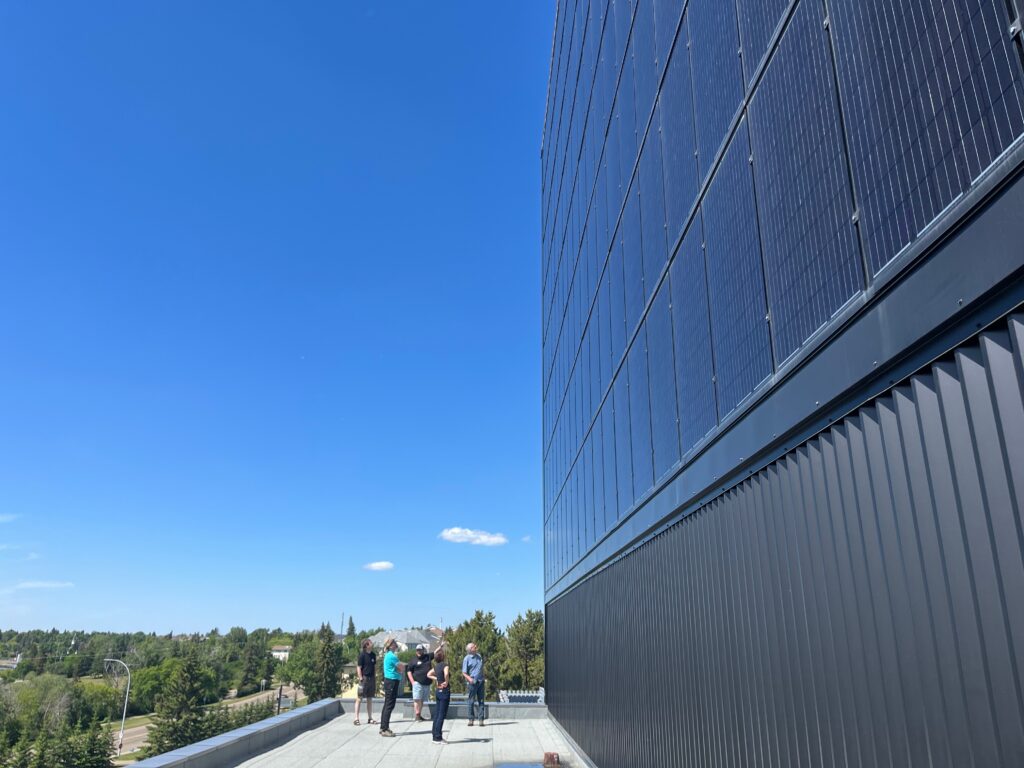

A big thanks to the Jeanne and Peter Lougheed Performing Arts Centre and especially to Sean for the opportunity to see what this amazing building has to offer. Providing so much interesting insight into its development and operation.

